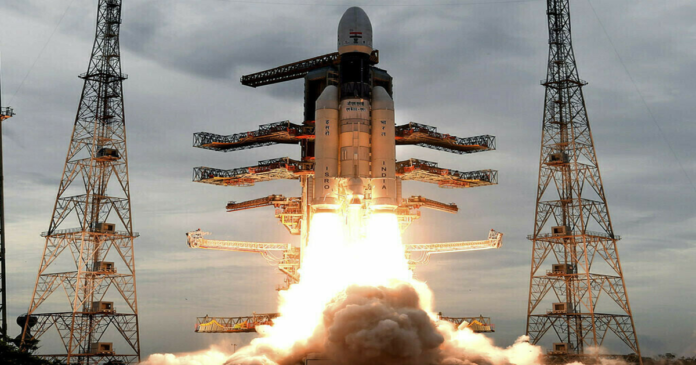An unprecedented achievement that would strengthen India’s standing as a significant space power is the launch of a rocket by the Indian space agency that would try to land a spacecraft at the lunar south pole.
India launches rocket to land spacecraft: On Friday, television images showed the LVM3 launch rocket of the Indian Space Research Organisation (ISRO) take off from the nation’s primary spaceport in the southern state of Andhra Pradesh, leaving a plume of smoke and fire in its wake.
As part of the Chandrayaan-3 project, they will release a lander and rover, referred to as the “moon vehicle” in Sanskrit, on or around August 23.
Cheers and applause filled Satish Dhawan Space Centre’s mission control as ISRO engineers and scientists cheered while keeping an eye on the spacecraft’s launch.
As they saw the spaceship ascend into the sky, tens of thousands of Indians shouted and waved the national flag outside the mission control centre.
Salutations to India. Soon after the launch, ISRO Director Sreedhara Panicker Somanath stated that Chandrayaan-3 has begun its voyage towards the moon.
The United States, the former Soviet Union, and China are the only other space agencies to have successfully landed a lander on the moon.
None have come close to the south pole of the moon.
The mission was carrying the “hopes and dreams of our nation,” tweeted Indian Prime Minister Narendra Modi, who is presently in France.
The third Chandrayaan spacecraft has a two-meter-tall lander that will set up a rover near the lunar south pole, where it will conduct a number of experiments for the next two weeks.
“Chandrayaan-2 Mission: Successful Orbiter Deployment, Lander and Rover Encounter Crash Near Chandrayaan-3 Site”
During the ISRO Chandrayaan-2 mission in 2020, the orbiter deployment was successful, but the lander and rover suffered destruction in a crash near the site of the Chandrayan-3 touchdown attempt.
Furthermore, After touchdown, the rover named Vikram, which means courage in Sanskrit, will disembark from the lander and explore the immediate area. It will collect photographs that will be sent back to Earth for study.
However, The rover, named Pragyan, which means wise in Sanskrit, has a mission life of one lunar day, equivalent to 14 days on Earth.

